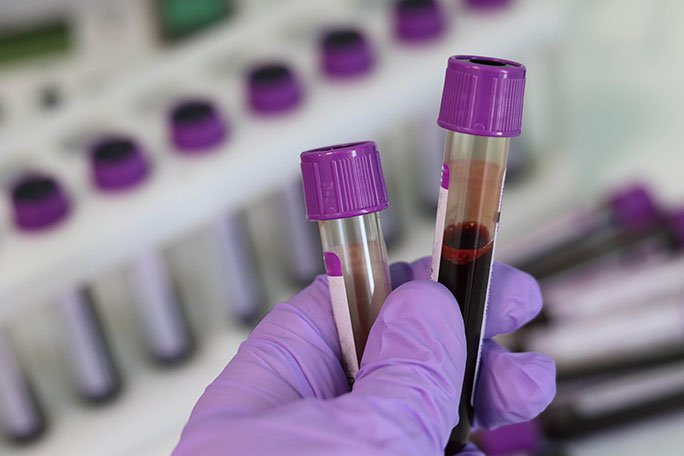Hospitals' Cybersecurity: Safeguarding Patient Data and Medical Equipment
Summary
- Hospitals face increasing cybersecurity threats that jeopardize patient data and medical equipment.
- Implementing robust security measures, regular training for staff, and maintaining up-to-date software are crucial steps in safeguarding patient data and equipment.
- Collaboration with cybersecurity experts, conducting risk assessments, and having a response plan in place are essential for hospitals to strengthen their defense against cyber threats.
Introduction
In today's digital age, hospitals across the United States are facing a growing number of cybersecurity threats that pose serious risks to patient data and medical equipment. The healthcare industry has become a prime target for cybercriminals due to the sensitive nature of the information stored in Electronic Health Records (EHRs) and the critical role that medical equipment plays in patient care. As such, hospitals must prioritize security measures to ensure the safety and security of patient data and medical equipment in the face of increasing cyber threats.
The Growing Cybersecurity Threats in Hospitals
Hospitals are increasingly being targeted by cybercriminals seeking to exploit vulnerabilities in their systems to access patient data or disrupt medical equipment. The following are some of the key cybersecurity threats that hospitals are facing:
Ransomware Attacks
Ransomware attacks have become a prevalent threat to hospitals, where cybercriminals use malicious software to encrypt patient data and demand a ransom for its release. These attacks can disrupt hospital operations, compromise patient care, and result in financial losses.
Phishing Scams
Phishing scams involve tricking hospital staff into providing sensitive information or clicking on malicious links that can compromise the security of patient data and medical equipment. These scams are often carried out through emails or messages that appear to be from legitimate sources.
Unauthorized Access
Unauthorized access to hospital systems can lead to the theft or manipulation of patient data, as well as the disruption of medical equipment, putting patient safety at risk. Cybercriminals may exploit weak passwords or outdated software to gain unauthorized access to hospital networks.
Ensuring the Safety and Security of Patient Data
Protecting patient data is a top priority for hospitals, given the sensitive and confidential nature of the information contained in EHRs. The following are some strategies that hospitals can implement to ensure the safety and security of patient data:
Implement Robust Security Measures
Hospitals should implement robust security measures, such as firewalls, encryption, access controls, and multi-factor authentication, to protect patient data from unauthorized access. These measures can help prevent data breaches and safeguard Patient Confidentiality.
Regular Training for Staff
Training staff on cybersecurity best practices is essential in preventing data breaches caused by human error, such as falling victim to phishing scams or using weak passwords. Hospitals should provide regular training sessions to educate staff on how to identify and respond to cyber threats.
Maintain Up-to-Date Software
Keeping software and systems up to date with the latest security patches is crucial in addressing vulnerabilities that cybercriminals may exploit. Hospitals should regularly update their software and conduct security audits to identify and address any weaknesses in their systems.
Securing Medical Equipment
In addition to safeguarding patient data, hospitals must also secure their medical equipment to prevent cyberattacks that could compromise patient care. The following are some measures that hospitals can take to ensure the security of medical equipment:
Collaboration with Cybersecurity Experts
Hospitals should collaborate with cybersecurity experts to assess the security of their medical devices and implement measures to protect them from cyber threats. Experts can help hospitals identify vulnerabilities in their equipment and recommend security solutions to mitigate risks.
Conduct Risk Assessments
Conducting risk assessments on medical equipment can help hospitals identify potential security weaknesses and vulnerabilities that cybercriminals may exploit. By assessing the risks associated with medical devices, hospitals can prioritize security measures to protect against cyber threats.
Have a Response Plan in Place
Hospitals should have a response plan in place to address cyber incidents involving medical equipment, such as malware infections or unauthorized access. A response plan outlines the steps that staff should take in the event of a cyberattack to minimize the impact on patient care and ensure the security of medical equipment.
Conclusion
In conclusion, hospitals in the United States face increasing cybersecurity threats that endanger patient data and medical equipment. To ensure the safety and security of patient information and equipment, hospitals must implement robust security measures, provide regular training for staff, and maintain up-to-date software. Collaboration with cybersecurity experts, conducting risk assessments, and having a response plan in place are essential steps in strengthening hospitals' defense against cyber threats. By prioritizing cybersecurity and taking proactive measures to protect patient data and equipment, hospitals can mitigate the risks posed by cyberattacks and safeguard patient care.

Disclaimer: The content provided on this blog is for informational purposes only, reflecting the personal opinions and insights of the author(s) on the topics. The information provided should not be used for diagnosing or treating a health problem or disease, and those seeking personal medical advice should consult with a licensed physician. Always seek the advice of your doctor or other qualified health provider regarding a medical condition. Never disregard professional medical advice or delay in seeking it because of something you have read on this website. If you think you may have a medical emergency, call 911 or go to the nearest emergency room immediately. No physician-patient relationship is created by this web site or its use. No contributors to this web site make any representations, express or implied, with respect to the information provided herein or to its use. While we strive to share accurate and up-to-date information, we cannot guarantee the completeness, reliability, or accuracy of the content. The blog may also include links to external websites and resources for the convenience of our readers. Please note that linking to other sites does not imply endorsement of their content, practices, or services by us. Readers should use their discretion and judgment while exploring any external links and resources mentioned on this blog.

